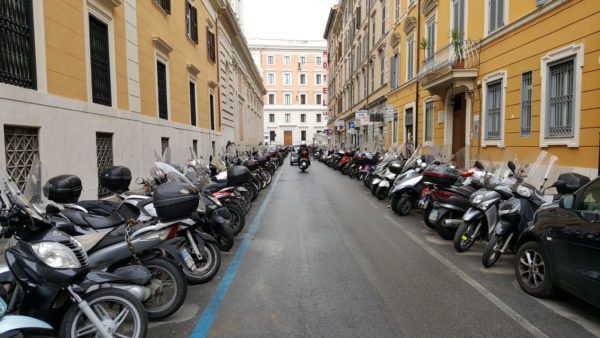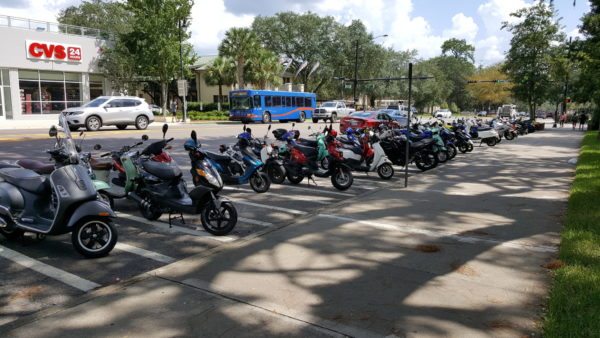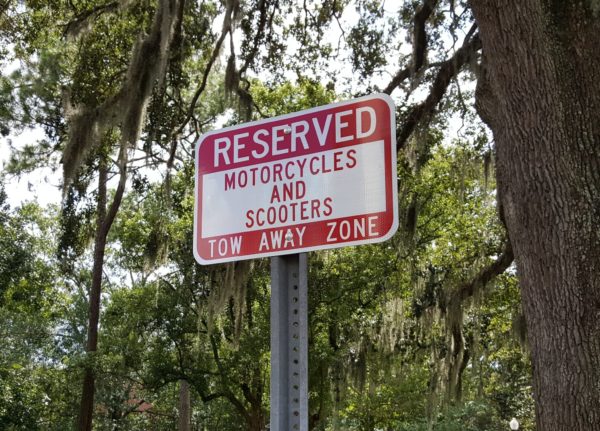The European model: Transportation vs. recreation
Qualifying to attend this year’s EICMA Motorcycle Show in Milan, Italy, set into motion a first trip to Europe, and nothing could have prepared first-time participants for the sheer size and scope of this event — more than 1700 exhibitors from 42 countries around the globe set up in eight pavilions covering over 3.7 million square feet! After earning an invite to this event by a major helmet line that happens to be the best selling brand in Europe and the fastest growing line in the USA, the opportunity to travel Italy in subsequent weeks to examine and analyze the European market followed.
One of the most obvious observations made was that scooters and motorcycles are, out of necessity and practicality, a major staple of basic transportation in Italy and much of Europe. This finding is in stark contrast to the U.S. where these vehicles are primarily bought and used for recreation. In old cities with very narrow streets, dense traffic, and limited parking, two-wheeled transportation is a huge advantage in many areas. The train, subway, and bus systems were developed and utilized seemingly more efficient than similar means in the U.S. and allowed extensive travel possible – even to remote areas — for those without a vehicle. However, scooters and motorcycles provided a much better level of personal transportation in areas where travel by car would be difficult and parking nearly impossible.
Lane splitting by two-wheeled vehicles is permitted and at every traffic light the scooters and motorcycles would edge to the front of the line for a quick take-off when the light changed. As cars circled the block looking for a rare parking space, five or six scooters packed into one parking space or felt free to park on the sidewalk or anywhere that there was an unoccupied space. Riders on scooters and motorcycles were very well equipped with protective gear and even with temperatures in the 40’s with pouring rain the streets were still packed with two-wheeled vehicles.
Notably and expectedly, in more modern areas where roads were broader, less traffic prevailed, and available parking increased, the percentage of cars was much higher. However, the majority of cars that peppered the roads were smart cars, minis, economy and subcompact models.
Sights like the image below taken in Rome were common. The bigger cities had a higher percentage of motorcycles to scooters and around every corner a hundred more were parked. There were tens of thousands buzzing across the city – an equal number of cars would have been impossible.
Nice observation, but what does this information have to do with the U.S. market? The U.S. has been moving rapidly towards urbanization with over 80 percent of the population now living in cities and almost 63 percent living inside of just 3.5 percent of the total land. The U.S. is quickly reaching traffic limitations and standstills with automobiles. Already, many cities experience difficulties operating, maintaining and parking a car inside the city limit, and the situation will become more and more difficult with continued growth. According to researchers and as reported by many news outlets, less young people in the U.S. today are getting a driver’s license and are stating reasons such as expense of owning and maintaining a vehicle as a reason why. Some are content relying on parents, friends, and Uber to get around instead of investing in personal transportation. Perhaps now more than ever before, the youth of America need to be introduced to the convenience and economic feasibility of utilizing a two-wheeled vehicle for transit.
One of the best examples of a reliance on two-wheeled vehicles in the Southeast area is in Gainesville, Florida at the University of Florida campus. This is the only area within my territory where I have witnessed anything similar to the scale of scooter and motorcycle dependence observed in Europe. Severe traffic and parking limitations made life difficult for the students at UF. Campus transportation by bus was inadequate and students were frequently passed by at bus stops when the bus reached full capacity – leaving the student without reliable transit to their next class.
Collin Austin, who owns New Scooters 4 Less in Gainesville, experienced the annoyance of shoddy campus transportation firsthand as a student of UF. As a result of his frustration, he turned to scooter ownership in an attempt to solve the transportation problem. Austin now helps students purchase and maintain scooters during their time at UF. The scooter culture has grown organically and has been fully supported by the university and the City of Gainesville. More and more parking was shifted to scooters as the numbers grew and the additional parking space enticed more students to turn to scooters for transportation. Austin works very closely with the University and local government to build the scooter community and provide transportation solutions that benefit everyone involved. He has even joined the Board of Directors for the local Chamber of Commerce.
Europe? Nope! This is a photo of the scooter parking area on the campus of The University of Florida in Gainesville. Just like in Europe, two-wheeled transportation has solved a lot of traffic and parking issues on the campus. Could these students be a part of the next generation of motorcycle riders after graduation once gainfully employed?
The motorcycle industry is desperate for a way to stop the decline in riders. Manufacturers have pushed bigger and bigger bikes on the enthusiast for decades in the U.S., and until recently, this trend seemed to be working. Now that the core rider group is aging out, the industry needs to get back to basics. Manufacturers are doing a great job of offering some more affordable entry level bikes into the market, but there are still a lot of smaller and more affordable bikes that are sold in the European market that are not even available stateside.
Perhaps the best way to get riders back on two wheels is to make scooters and motorcycles a fun and convenient mode of transportation that increases the likelihood of finding a place to park when arriving at a destination. Legalized lane splitting in California has proven to be a safe way for motorcyclists to navigate some of the worst traffic in the country. If the industry can find a way to work with local governments to give two wheeled transportation advantages to get from point A to point B — and provide a place to park, then everyone can be rewarded with less traffic congestion and more convenient transportation.
Populations are growing in U.S. cities and the traffic and parking issues are only going to worsen. Solving these problems could be a way to breathe new life into the industry. Individuals using scooters and motorcycles for daily transportation will support the industry through services, parts, and gear for all weather conditions. The time is now to get back to the basics and make motorcycling a fun and convenient way to journey the roads, streets and highways!
Could this happen in your city? What would it do for your business?
Scott Hochmuth is the owner of Real Performance Marketing, an Atlanta-based company representing ten different Powersports related product lines in the Alabama, Florida, Georgia, and Tennessee areas. He comes face-to-face with over 200 dealers every 8 weeks. He has been in sales since 1982 and started in the powersports industry in 1989 as a sales representative for a helmet manufacturer.











